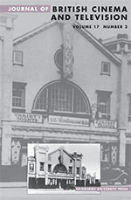
Journal of British Cinema and Television
Scope & Guideline
Charting the Evolution of British Cinema and Television
Introduction
Aims and Scopes
- Exploration of British Film History:
The journal extensively covers the history of British cinema, focusing on significant movements such as the British New Wave, as well as notable figures and productions from various eras. - Cultural and Social Analysis:
It emphasizes the analysis of social and cultural themes within British cinema and television, including identity, class, gender, and regional representation. - Interdisciplinary Approaches:
The journal encourages interdisciplinary methodologies, incorporating perspectives from film studies, cultural studies, history, and media studies to provide a comprehensive understanding of British cinema and television. - Focus on Television Studies:
In addition to cinema, the journal pays considerable attention to television, analyzing its narrative structures, cultural impact, and the evolution of television drama in Britain. - Documentary and Genre Studies:
It also addresses documentary filmmaking and various film genres, examining their roles in shaping public perceptions and cultural narratives. - Queer Cinema and Representation:
The journal has a significant focus on queer representation in film and television, exploring how these narratives challenge mainstream discourses.
Trending and Emerging
- Queer Representation in Media:
There is an increasing trend towards examining queer narratives and representation within British cinema and television, highlighting the importance of inclusivity in storytelling. - Diversity and Inclusion in Film and Television:
Recent publications are focusing on equity, diversity, and inclusion, critiquing class inequalities and advocating for broader representation within the industry. - Regional Narratives and Identity:
The exploration of regional identities, particularly in relation to Northern Ireland and other parts of the UK, is emerging as a significant theme, reflecting the complex socio-political landscapes. - Documentary Practices and Impact:
There is a growing interest in documentary filmmaking as a means of exploring social issues, with a focus on how these films influence public discourse and awareness. - Adaptation and Genre Hybridity:
Studies on adaptation practices and the blending of genres are on the rise, reflecting the evolving nature of storytelling in contemporary cinema and television. - Impact of Digital Media and Streaming:
The rise of digital platforms and their influence on British cinema and television narratives is becoming a key area of exploration, examining how these platforms reshape audience engagement and content distribution.
Declining or Waning
- Traditional Film Genres:
There is a noticeable decrease in studies focused on traditional film genres such as classic horror and melodrama, as newer genres and hybrid forms gain traction in contemporary discourse. - Historical Accounts of Early Cinema:
While foundational studies of early British cinema were once prevalent, there has been a shift towards more contemporary analyses, leading to less emphasis on the silent film era. - Mainstream Popular Culture:
Research on mainstream popular culture, particularly in relation to blockbuster films, is declining as the journal increasingly prioritizes niche, independent, and culturally specific cinema. - Biographical Studies of Individual Filmmakers:
The focus on biographical narratives of individual filmmakers has decreased, with more emphasis being placed on collaborative practices and collective movements in British cinema. - Censorship and Regulation:
Topics surrounding film censorship and regulation, which were once critical in understanding the historical context of British cinema, are being overshadowed by broader cultural critiques.
Similar Journals

Cinema-Journal of Philosophy and the Moving Image
Illuminating Cinema through Philosophical Inquiry.Cinema: Journal of Philosophy and the Moving Image is a distinguished open-access journal dedicated to the critical analysis of cinema through the lenses of philosophy and cultural theory. Published by the esteemed New University of Lisbon's IFILNOVA - Nova Philosophy Institute, this journal has been a crucial platform for the dissemination of innovative and interdisciplinary research since its establishment in 2010. With an ISSN of 1647-8991 and a significant presence in both Communication and Visual Arts categories, it currently holds a Q4 ranking in 2023, reflecting its growing role in the academic discourse of its field. While the journal has a modest impact as indicated by its Scopus rankings, it serves as a vital resource for researchers, professionals, and students interested in the intersection of philosophy and the moving image, fostering rich dialogues about cinema's impact on society and culture. Situated in Portugal, Cinema invites submissions that challenge conventional perceptions, engaging with both contemporary and historical contexts of film and imagery, thereby playing an essential role in expanding the horizons of film studies.
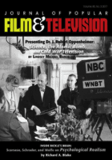
JOURNAL OF POPULAR FILM AND TELEVISION
Illuminating the Impact of Film and Television on Society.JOURNAL OF POPULAR FILM AND TELEVISION, published by Routledge Journals, Taylor & Francis Ltd, stands as a significant platform for academic discourse in the realms of cultural studies, visual arts, and performing arts. With its ISSN: 0195-6051 and an evolving digital presence indicated by its E-ISSN: 1930-6458, the journal has carved out a respected niche since its inception in 1978, continuing to contribute to scholarly discussions through 2024. Its impact within the academic community is underscored by a Q3 ranking in Cultural Studies and a Q2 ranking in Visual Arts and Performing Arts for 2023, highlighting its relevance across diverse fields. Notably, with a Scopus ranking placing it in the 74th percentile among visual arts and performing arts journals, it serves as an essential reference point for researchers, professionals, and students committed to the critical examination of film and television. Although not an open-access journal, it provides valuable insights and analysis that enrich understanding of popular media's impact on society. The journal's location in the United States, with a headquarters in Abingdon, England, further affirms its international scope and influence.
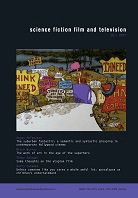
Science Fiction Film and Television
Innovative Perspectives on the Science Fiction GenreScience Fiction Film and Television, published by LIVERPOOL UNIV PRESS, is a leading academic journal that explores the rich intersection of science fiction with cinematic and television narratives. With an ISSN of 1754-3770 and E-ISSN 1754-3789, this journal provides a platform for critically engaging with both historical and contemporary works within the genre, offering insights into its cultural significance, aesthetic innovations, and societal impacts. As part of the communication and visual arts fields, it is recognized in the Scopus ranking, achieving an impressive percentile of 87th in Visual Arts and Performing Arts, and maintaining a respectable rank within communication studies. Since its inception in 2018, it aims to foster dialogues among scholars, professionals, and students, making substantial contributions to the understanding of science fiction as a vital cultural phenomenon. With access options that cater to a broad audience, Science Fiction Film and Television is essential reading for those interested in exploring the innovative potentials and narratives of science fiction across media.
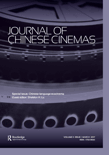
Journal of Chinese Cinemas
Exploring the Depths of Chinese Cinematic ArtistryThe Journal of Chinese Cinemas, published by Routledge Journals, Taylor & Francis Ltd, is a leading platform dedicated to advancing the field of film studies with a focus on cinema from China. With an ISSN of 1750-8061 and an E-ISSN of 1750-807X, this journal provides a comprehensive examination of the cultural, social, and political dynamics inherent in Chinese cinema. Ranked in the Q3 category for Communication and Q1 for Visual Arts and Performing Arts in 2023, it stands out in the academic landscape, particularly noted for its innovative research and diverse discourse. It holds a respectable position in Scopus rankings, coming in at #219 within Visual Arts and Performing Arts, indicating its growing impact among scholars and practitioners alike. With its commitment to publishing high-quality research from 2012 onwards, the journal serves as an essential resource for researchers, professionals, and students eager to deepen their understanding of the evolving landscape of Chinese cinema.
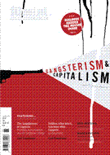
Film International
Diving Deep into the World of Film and Its Narratives.Film International is a prominent journal dedicated to the exploration of film and its cultural, social, and artistic significance. Published by INTELLECT LTD, this journal serves as a platform for interdisciplinary studies in the field of film criticism, theory, and scholarship, contributing valuable insights from both established and emerging researchers. With an ISSN of 1651-6826 and an E-ISSN of 2040-3801, the journal is an essential resource for those engaged in the realms of communication, cultural studies, and visual arts, though it is currently classified in the lower quartiles of these fields (Q4). Noteworthy for its critical perspectives and diverse content, Film International enhances the dialogue surrounding cinematic practices and their impact on society. Researchers, professionals, and students can explore its rich assemblage of articles and reviews that reflect the evolving landscape of film studies, making it a significant addition to the academic community focused on the art of film.
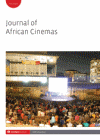
Journal of African Cinemas
Celebrating the Diverse Stories of African CinemaJournal of African Cinemas is a pioneering publication dedicated to exploring the dynamic field of African cinema and its cultural impacts. Published by INTELLECT LTD in the United Kingdom, this journal serves as a crucial platform for researchers, filmmakers, and students interested in understanding the complexities of film within the African context. With ISSN 1754-9221 and E-ISSN 1754-923X, the journal focuses on various aspects of cinema, including theory, production, and reception, highlighting the rich tapestry of storytelling from the African continent. Despite being classified in Q4 in Communication and Q3 in Cultural Studies and Visual Arts & Performing Arts for 2023, it stands out by capturing the multifaceted identities and experiences portrayed in African films. Engaging with a diverse array of interdisciplinary topics, the Journal of African Cinemas invites contributions that foster critical discourse and promote a deeper understanding of the unique aesthetic and social narratives present in African filmmaking. As it converges into a significant scholarly resource from 2017 to 2023, this journal is an essential read for anyone invested in the intersection of culture and cinema.

Journal of the Australian Early Medieval Association
Fostering Scholarly Dialogue on a Vibrant Historical TapestryThe Journal of the Australian Early Medieval Association is a pivotal scholarly outlet dedicated to the exploration and dissemination of research on early medieval studies, with a particular focus on Australian perspectives and contributions. Established in 2005 and published by the Australian Early Medieval Association Inc, this journal has become a cornerstone for academics, practitioners, and students interested in the intricate tapestry of history from this vibrant period. With an ISSN of 1449-9320 and an E-ISSN of 2207-2802, it provides an accessible platform for high-quality research, despite being categorized as Q4 in History, reflecting its niche positioning within the academic landscape. Though it currently does not offer Open Access options, the journal encourages contributions that delve into both regional and global early medieval contexts. As it continues its journey through the years, from 2005 to 2023, it remains committed to enriching its field and fostering scholarly dialogue on emerging themes and issues relevant to early medieval studies.

American, British and Canadian Studies
Illuminating Contemporary Issues in North American and British ContextsAmerican, British and Canadian Studies, published by SCIENDO, is a distinguished open-access journal dedicated to the exploration of cultural, linguistic, and literary studies as they pertain to North American and British contexts. With an ISSN of 1841-1487 and an E-ISSN of 1841-964X, this journal has been a valuable scholarly resource since its inception, becoming fully open access in 2012. As of 2023, it has ranked in the Q2 category for Literature and Literary Theory, indicative of its growing influence and importance in the field. The journal notably covers a spectrum of disciplines, securing a Q3 ranking in both Cultural Studies and Linguistics and Language while also addressing aspects of Sociology and Political Science. Researchers, educators, and students will find the journal's diverse scope and rigorous peer-review process essential for understanding contemporary issues within these intertwined fields. With articles from 2017 to 2023 now converged for enhanced accessibility, American, British and Canadian Studies continues to foster dialogue and promote scholarly discourse across multiple disciplines.
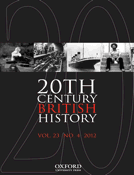
Twentieth Century British History
Bridging disciplines to enrich historical understanding.Twentieth Century British History, published by Oxford University Press, stands as a pivotal scholarly journal in the field of historical research, specializing in the rich tapestry of British history during the twentieth century. With an esteemed impact factor and a notable position within the top Q1 quartile of history journals, it ranks impressively in the Scopus database, securing the 234th position out of 1,760 journals in Arts and Humanities, placing it in the 86th percentile. This rigorous academic platform, active since its establishment in 1990, not only contributes to the sophistication of historical discourse but also encourages interdisciplinary dialogue among historians, sociologists, and cultural studies scholars. Though it does not currently offer open access options, the journal provides invaluable insights, critical analyses, and innovative perspectives aimed at enriching the understanding of Britain’s past and its implications for contemporary society. Researchers, professionals, and students alike will find Twentieth Century British History an essential resource for exploring and appreciating the complexities of modern history.
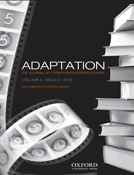
Adaptation-The Journal of Literature on Screen Studies
Unveiling the Dynamics of Literature on Screen.Adaptation: The Journal of Literature on Screen Studies, published by Oxford University Press, stands at the forefront of interdisciplinary scholarship, blending the realms of literature, visual arts, and performing arts. This esteemed journal addresses the evolving relationship between literature and its adaptation into various screen formats, providing a vital platform for researchers, professionals, and students interested in the adaptation process across different media. With a commendable 2023 impact factor reflected by its recognition in the Q1 quartile categories for Literature and Literary Theory as well as Visual Arts and Performing Arts, it ranks in the top tiers of its field, showcasing its influence and reach. The journal is dedicated to exploring theoretical and practical approaches to adaptation, ensuring that voices from diverse perspectives are heard. Although it operates under traditional access models, the insights offered in its publications are invaluable for those looking to deepen their understanding of how literature translates into screen narratives. With coverage spanning from 2010 to 2024, Adaptation continues to be a pivotal reference point for innovative scholarship and critical discourse.